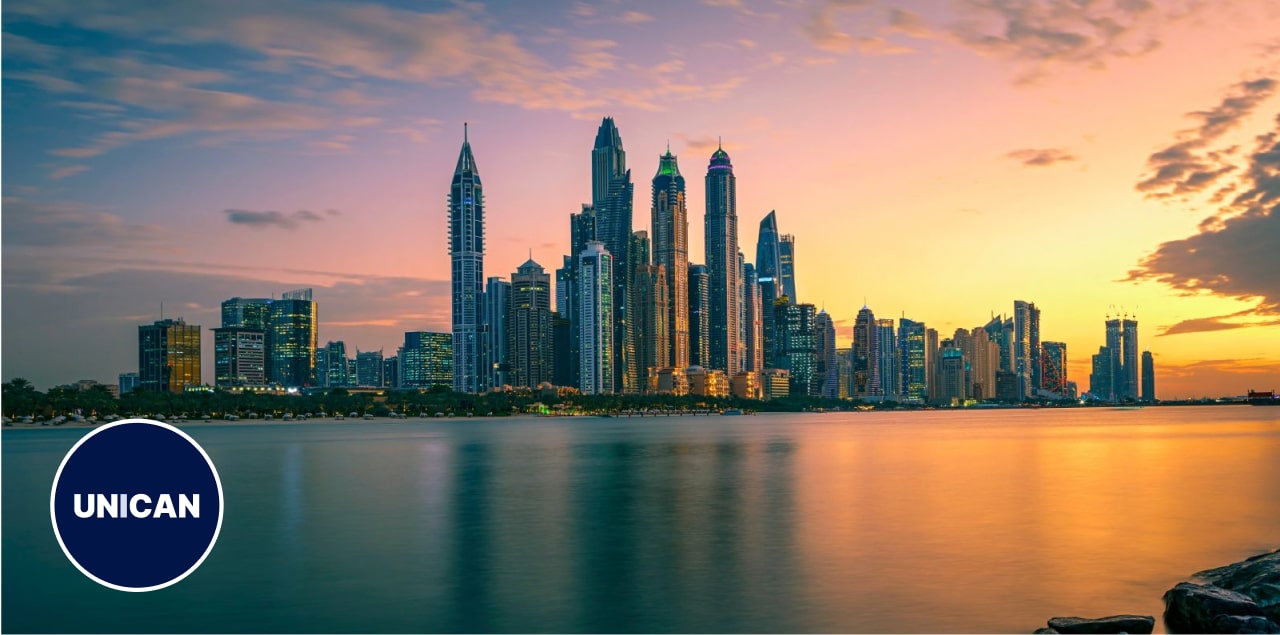US EB5 Investor Program
EB-5 Immigrant Investor Program, also known as the Regional Center Program, aims to stimulate the U.S. economy through job creation and capital investment by foreign investors. The program is operated by the United States Citizenship and Immigration Services (USCIS). Investors may qualify for the EB-5 classification by investing through regional centers designated by USCIS based on proposals for promoting economic growth.
Although the EB-5 investor visa program is essentially a way to get a green card or permanent residency through investment, it is not a citizenship-by-investment program. The EB-5 gives permanent U.S. residency to foreigners who invest in government-approved projects across the United States of America. It allows the holder to live, retire, work and study in the USA. It also grants the ability to the investor to receive investment back upon the completion of the project and residency for the investor, any unmarried children (under the age of 21), and their spouse.
The main applicant must reside in the USA for 6 months per year. They can also apply for USA citizenship after 5 years of permanent or unconditional residency status (the 10-year Green Card). In total, they must live in the US for at least 7 years before applying for citizenship. To receive the USA citizenship visa, they must invest at least $900,000 in a US enterprise and create at least 10 American jobs.
The USCIS only issues 10,000 EB-5 Investment Visas per year. This also includes the visas issued to family members.
EB-5 Visa Investment Options
The EB-5 applicant must first find a suitable business project to invest in. In the past, many of the EB5 projects were real estate-related. Now in the new EB-5 landscape, job sectors are more diverse – and many new commercial enterprises are no longer location-dependent, thus making them easier to qualify for Targeted Employment Area (TEA) designation – at half the investment amount.
EB-5 investor visa applicants have 2 main investment options. Investors can either invest directly or indirectly through an investment sponsored by an EB-5 Regional Center.
A direct EB-5 Investment means you create your own company in the USA or you purchase an existing company. You can invest in another company/enterprise of your choice or create your own company in the US, but you must make sure it meets the USCIS requirements. Because the investment is outside the USCIS-approved TEA, you will have to make a higher investment, by at least double the amount. Additionally, you must prove that your investment/company has directly created at least 10 new jobs, and you must have a direct role in the company. Moreover, you may need to be near the enterprise you invested in because you will have to prove you are active in the company.
Need more information? Click here
Direct investors must find their investment projects and do not benefit from the ability to count jobs indirectly using reasonable economic methodologies. Direct investment is best for those who want more hands-on control of their investment and the project that received their investment.
Indirect jobs are those that have come as a result of the investment in the commercial enterprise, but the people hired work for other companies. These can be jobs in the supply chain of the commercial enterprise. You can invest in a rural area or an area that has a high rate of unemployment, in a government-approved program.
EB-5 investor visa applicants can also make an investment sponsored by an EB-5 Regional Center. This option may be best for those who are more interested in the immigration goals of EB-5 rather than obtaining a maximum return on their investment, and for those who do not wish to oversee the day-to-day management of their investment. These investors can live and work anywhere in the US they want. Since they have invested through a Regional Center, then they do not need to live in the same state as the state in which they invest.
Regional centers are responsible for adhering to USCIS EB-5 program regulations. This can take the strain off of the investors so that they are not solely responsible for meeting program requirements. As a result, investment through regional centers suits those who want a more hands-off approach, where they are not responsible for the direct management of their investment.
The vast majority of EB-5 applications are made through Regional Centers, as most applicants are more concerned about the immigration aspect of their investments rather than capital return.
EB-5 business projects generally take the form of either new commercial enterprises or regional center projects.
All EB-5 investors must invest in a new commercial enterprise that was established:
- After Nov. 29, 1990; or
- On or before Nov. 29, 1990, that was:
- Purchased and the existing business is restructured or reorganized in such a way that a new commercial enterprise results; or
- Expanded through the investment, resulting in at least a 40% increase in the net worth or number of employees.
Commercial enterprise means any for-profit activity formed for the ongoing conduct of lawful business, including:
- A sole proprietorship;
- Partnership (whether limited or general);
- Holding company;
- Joint venture;
- Corporation;
- Business trust; or
- Other entity, which may be publicly or privately owned.
Applicants must also ensure that they meet accredited investor income requirements to move forward with the EB-5 process. Because of the large amount of money in question, many applicants choose to hire legal representatives to help with the EB-5 visa application process.
After your investment is settled, you have to gather the necessary evidence and submit the EB-5 Visa application.
Job Creation Requirements for US EB5 Investor
According to USCIS, an EB-5 investment must preserve or create a minimum of 10 full-time positions for workers in the United States who qualify. This creation or preservation of jobs generally must occur within 2 years of the investor’s conditional permanent residency and entrance into the United States.
- For a new commercial enterprise not located within a regional center, the new commercial enterprise must directly create full-time positions (35 working hours per week) to be counted. This means that the new commercial enterprise (or its wholly-owned subsidiaries) must be the employer of the qualifying employees.
- For a new commercial enterprise located within a regional center, the new commercial enterprise can directly or indirectly create full-time positions (35 working hours per week).
- Direct jobs establish an employer-employee relationship between the new commercial enterprise and the persons it employs.
- Indirect jobs are held outside of the new commercial enterprise but are created as a result of the new commercial enterprise.
- In the case of a troubled business, the EB-5 investor may rely on job maintenance.
- The investor must show that the number of existing employees is, or will be, no less than the pre-investment level for at least 2 years.
A troubled business is one that has been in existence for at least 2 years and has incurred a net loss during the 12- or 24-month period before the priority date on the immigrant investor’s Form I-526. The loss for this period must be at least 20% of the troubled business’ net worth before the loss. When determining whether the troubled business has been in existence for 2 years, USCIS will consider successors in interest to the troubled business when evaluating whether they have been in existence for the same period as the business they succeeded.
Requirements for EB-5 Visa Investment
The main requirements for an EB-5 Visa investment are:
- It must meet the minimum capital amount. Either $900,000 in a Targeted Employment Area (TEA) or $1.8 million outside TEAs.
- It must create at least 10 new full-time U.S. jobs for at least 2 years. If you cannot prove immediately that the investment has created the positions, you should be able to prove that the need for at least 10 new full-time employees will arise.
- The money you invest must have been acquired legally.
- The investment must be approved by the USCIS.
- The enterprise you invest in must be a “for-profit” new commercial enterprise that was established after 1990.
- The money you invest must be considered “at-risk”, meaning that there is no guarantee of capital return.
Documents Required for EB-5 Visa Application
When applying for an EB-5 visa, the USCIS will ask you to prove your investment meets their requirements. The documents you have to submit include:
- Documentary evidence that you have either invested or are in the process of investing in a for-profit new commercial enterprise established after 1990; or
- Purchased a for-profit new commercial enterprise established before 1990 but reorganized so that new enterprise results; or
- Invested in a for-profit new commercial enterprise established before 1990 but your investment resulted in at least a 40% increase in the net worth or number of employees;
- Evidence that you will manage or oversee the new enterprise;
- Evidence that your investment has led to at least 10 new full-time jobs – directly or indirectly. Or submit a comprehensive business plan showing that at least 10 new positions will be required if they are not at the moment;
- Evidence that you intend to keep the new employees for at least 2 years;
- Proof you have made the minimum required investment:
- Proof that your investment money was obtained lawfully; E.g.:
- Foreign business registration records
- Corporate, partnership, or personal tax returns
- Proof of any other source of capital
- Proof of any pending civil or criminal actions against you from a court in or outside the USA from the previous 15 years (if applicable).
- Your passport;
- Passport-size pictures;
- Civil documents, such as birth and marriage certificates;
- Completed Medical Examination Forms
Capital Investment Requirements for US EB5 Investor
Note: Immigrant investors must establish that they are the legal owner of the capital invested. Capital can include their promise to pay (a promissory note) under certain circumstances.
The minimum investment amounts by filing date and investment location are:
| Petition Filing Date | Minimum Investment Amount – 8 CFR 204.6(f)(1). | Targeted Employment Area Investment Amount – 8 CFR 204.6(f)(2) | High-Employment Area Investment Amount – 8 CFR 204.6(f)(3) |
| Before 11/21/2019 | $1,000,000 | $500,000 | $1,000,000 |
| On or After 11/21/2019 | $1,800,000 | $900,000 | $1,800,000 |
A TEA can be, at the time of investment, either:
- A rural area; or
- An area that has experienced high unemployment (defined as at least 150% of the national average unemployment rate).
How to Apply for an EB-5 Visa?
Once you have settled your investment, the process for applying for an EB-5 Visa is as follows:
- You apply to the USCIS using Form I-526, which is essentially the application form for an Investment Visa.
- The USCIS reviews the application and sends it to the National Visa Center (NVC).
- The NVC contacts you and asks you to pay the relevant fees and submit the required documents. The NVC informs you where and how to pay the fee.
- You apply for an Immigrant Visa and enter an interview at the US Embassy. The NVC will inform you where and when the interview will take place, and what documents you should bring.
- If everything goes accordingly, the US Embassy issues your Immigrant Investor Visa (i.e. the 2-year Green Card).
- If you are already in the US, You have to file for adjustment of status (Form I-485) with the USCIS instead of applying at a US Embassy.
The application process may differ depending on your location. If you are outside the US, your first point of reference should be the US Embassy in your country.
How Long Does the EB-5 Visa Process Take?
After choosing a suitable EB-5 project to invest in, the applicants must make the required capital investment amount in the project that they have chosen. The investment must be $1.8 million or $900,000 if the project is situated in a Targeted Employment Area (TEA). These investments are often made into an escrow account.
Then, an immigration attorney provides proof of this investment by filing an I-526 petition with USCIS. I-526 petition proves the applicant has invested or is in the process of investing the required capital, and that they meet the EB-5 program requirements. USCIS typically informs applicants whether or not their I-526 petition has been accepted after 13 to 25 months. Of course, the EB-5 processing timeline varies due to the country of birth of the applicant due to per-country limitations on the number of visas that may be granted in each fiscal year. Most regional centers will refund your investment if your I-526 is denied.
If a foreign national is not living in the U.S., then they must file a DS-260- Immigrant Visa Electronic Application- with the National Visa Center for conditional permanent residency, attend a visa interview at the Consulate or Embassy in their home country and thereafter enter the U.S. on an EB-5 visa. DS-260 is the petition that will confer the green card to the investor and his eligible dependents. It is highly advisable to file this form with an immigration attorney.
Upon entry to the U.S. on an EB-5 visa, the foreign national will receive a conditional green card that is valid for 2 years. So, they can implement the project funded by their EB-5 investment. This process normally takes approximately 9-12 months but may be longer depending upon visa appointment availability at their local Consulate or Embassy. You cannot be out of the country for more than 1 year without obtaining a re-entry permit, or you lose your residency status.
If a foreign national is inside the U.S. in certain statuses, they can file a Form I-485, Application to Register Permanent Residence or Adjust Status, to adjust their status to that of a permanent resident. Upon approval of this application, the foreign national will receive a conditional green card. This process normally takes approximately 6-9 months but can be longer depending upon the area of the U.S. where the foreign national is residing.
21 months after receiving their conditional green card, the foreign national is eligible to file a Form I-829, Petition by Investor to Remove Conditions on Permanent Resident Status. This application proves that the investor has met all requirements of the EB-5 visa program. This petition currently has an estimated processing time of 33 to 54 months. Upon approval of this petition, and after 5 years from the date they received their initial conditional residency, the foreign national investor and their applicable dependents will receive their unconditional green cards valid for 10 years, which can be renewed continuously. The process is known as Naturalization
Family Members of EB-5 Visa Holders
If you are approved for an EB-5 visa, the family members that can join you in the US are:
- Your spouse. Your spouse is eligible for both conditional and permanent residency along with you, provided that the two of you were married at the time you entered the US as a resident or when you change your status from a conditional resident to a permanent resident after 2 years. Same-sex spouses also qualify. A common-law spouse does not qualify.
- Your children. You can bring any children under the age of 21 along with you, and they will be eligible for conditional or permanent residence. This includes birth children, adopted children, as well as step-children. You must be able to prove legitimate parent lineage. If your child is under the age of 21, but they are married, they do not qualify for the visa.
EB-5 Visa Cost
The cost for the actual EB-5 Visa application is $3,675 for yourself and any applicants. Naturally, in addition to the $900,000 you invest and any other administrative fees, such as:
- Form DS-260 processing fee;
- Medical examination fees;
- Fees to obtain supporting documents;
- Any translation fees from a foreign language to English;
- Any fees you pay to acquire legal help during the investment process
Benefits of the EB-5 Visa in a Nutshell
Receiving an EB-5 Visa means you can:
- Live, work, and study in the US, as can your family members.
- Get a Green Card, which you can renew continuously.
- Apply for American citizenship a few years down the line. This will give you access to one of the strongest passports in the world.
- Travel in and out of the US without having to apply for a visa.
- Travel to other countries that allow visa-free passage to Green Card holders.
- Get your capital investment back, if you invested wisely.
- Get access to American healthcare, which is known as one of the best in the world.







2 Comments. Leave new
I feel, that you are currently wrongly recognized. Let us discuss it.
bookmarked!!, I love your site!